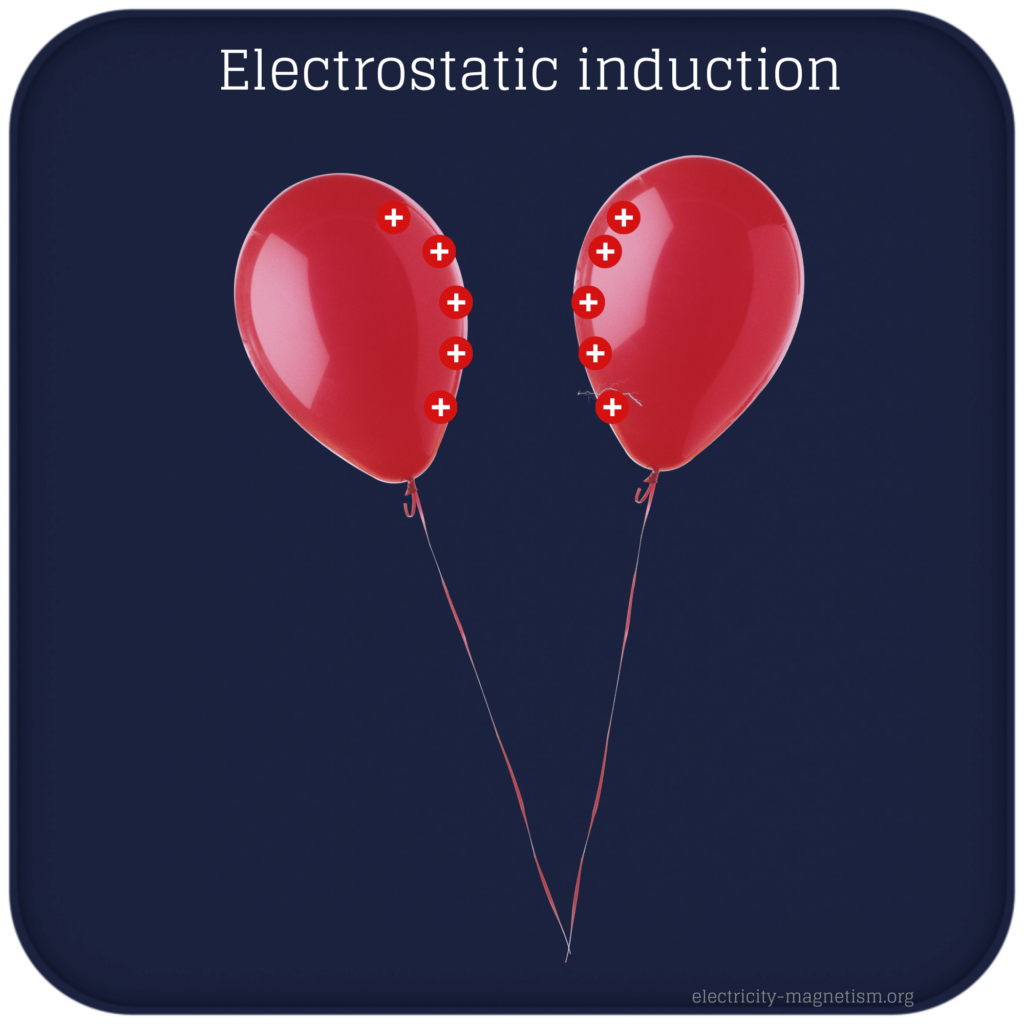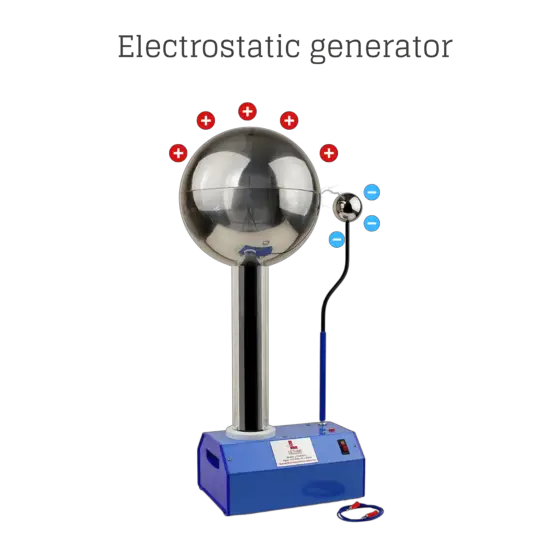30-second summary
Electrostatic Induction
Electrostatic induction, also known as an electrostatic influence, is a redistribution of electric charge in an object caused by the influence of nearby charged objects.
The electrified body acts through an electric field even to more distant objects, thus changing their original non-electrical state. When a conductor is inserted into an electrostatic field, a force acts on each charge in the conductor. The free charges begin to move, and the body is charged so that on the side facing the charge from which the electric field originates, there is the opposite charge, and on the opposite side, the charge is the same.
Electrostatic induction is also responsible for the attraction of light nonconductive objects, such as balloons, paper, or styrofoam scraps, to static electric charges.
Electrostatic generators, such as the Wimshurst machine, the Van de Graaff generator, and the electrophorus, use this principle.

Static Electricity
Static electricity is an informal term for phenomena caused by the accumulation of electric charge on the surface of various bodies and objects and their exchange in contact with each other.
Most of the static electricity we encounter every day is caused by the triboelectric effect. The triboelectric effect is a type of contact electrification in which certain materials become electrically charged after they come into contact with one another and then separated.
The friction of the two materials greatly increases the effect due to the frequent contact and separation of these materials. On dry days, static electricity is much more noticeable since the air contains fewer water molecules to allow leakage.
Note that a very high voltage is required to generate every 1mm of an electric arc. Air is a very bad conductor of electricity and has high dielectric strength. The dielectric strength of air is nearly 3000V/mm. Under severe conditions, up to 15 000 Volts have been recorded. It is quite common to experience 5 000V. In fact, many people do not feel a shock from a static electricity discharge of less than about 2 000-4 000V. The main reason that shock caused by static electricity does not hurt anybody is its very low amperage.
Electrostatic Generator

An electrostatic generator is an electrical generator that produces static electricity, or electricity at high voltage and low continuous current. The electric potential difference (i.e. voltage) can be generated using either of two mechanisms: electrostatic induction or the triboelectric effect.
Such generators generated very high voltage and low current. Because of their inefficiency and the difficulty of insulating machines that produced very high voltages, electrostatic generators had low power ratings and were never used for generation of commercially significant quantities of electric power. Their only practical applications were to power early X-ray tubes and later in some atomic particle accelerators.
There are different types of electrostatic generators (ESG’s); they can be friction or induction generators. ESG creates high voltage but has very low current. The voltages can go easily up to a hundred thousand voltages, but the current will only be of a few hundred microamperes. Dielectric materials can increase the breakthrough voltage and produce more electrical energy.
- Wimshurst machine,
- van de Graaff generator,
- Rotating-Disc High Voltage Generator.

